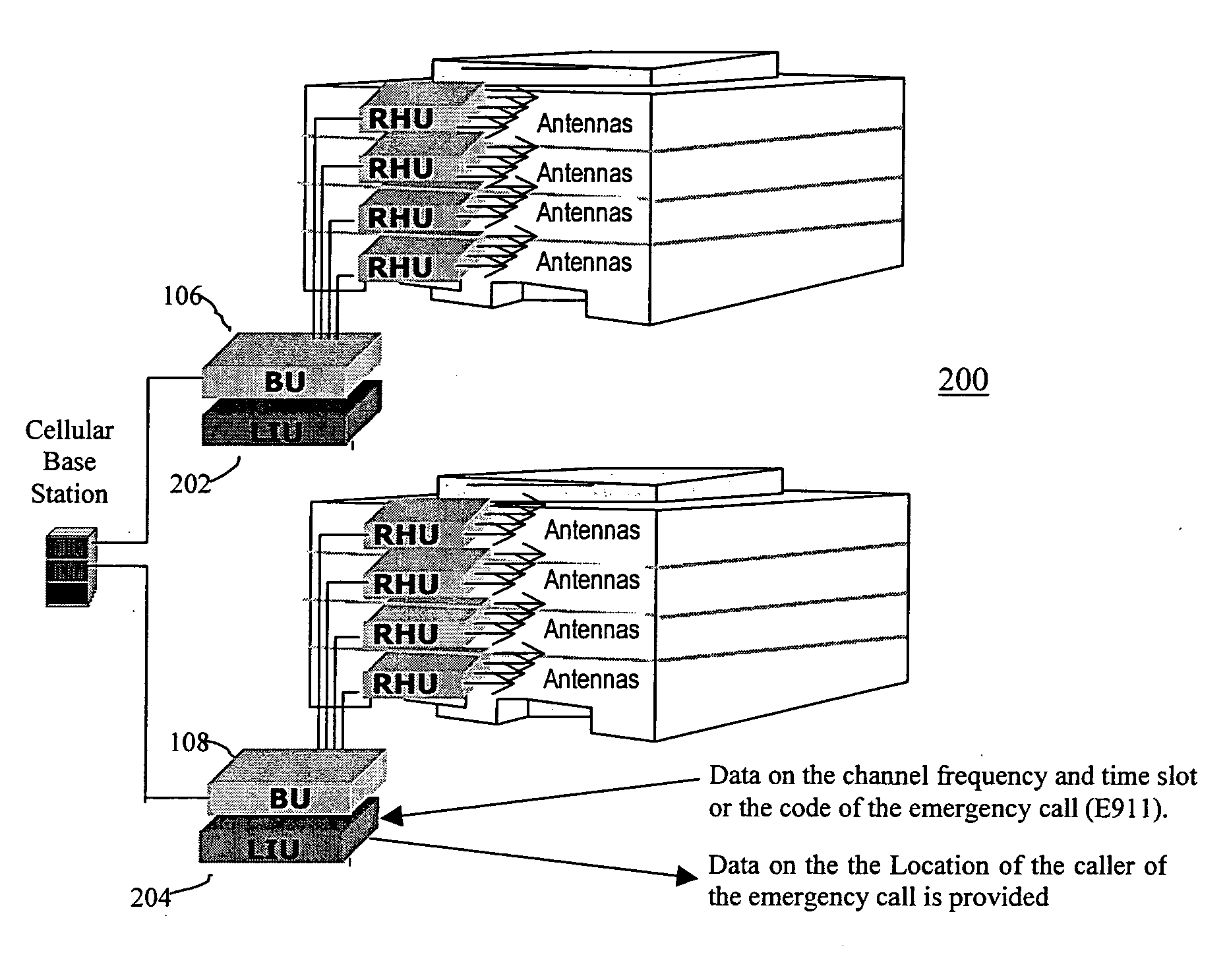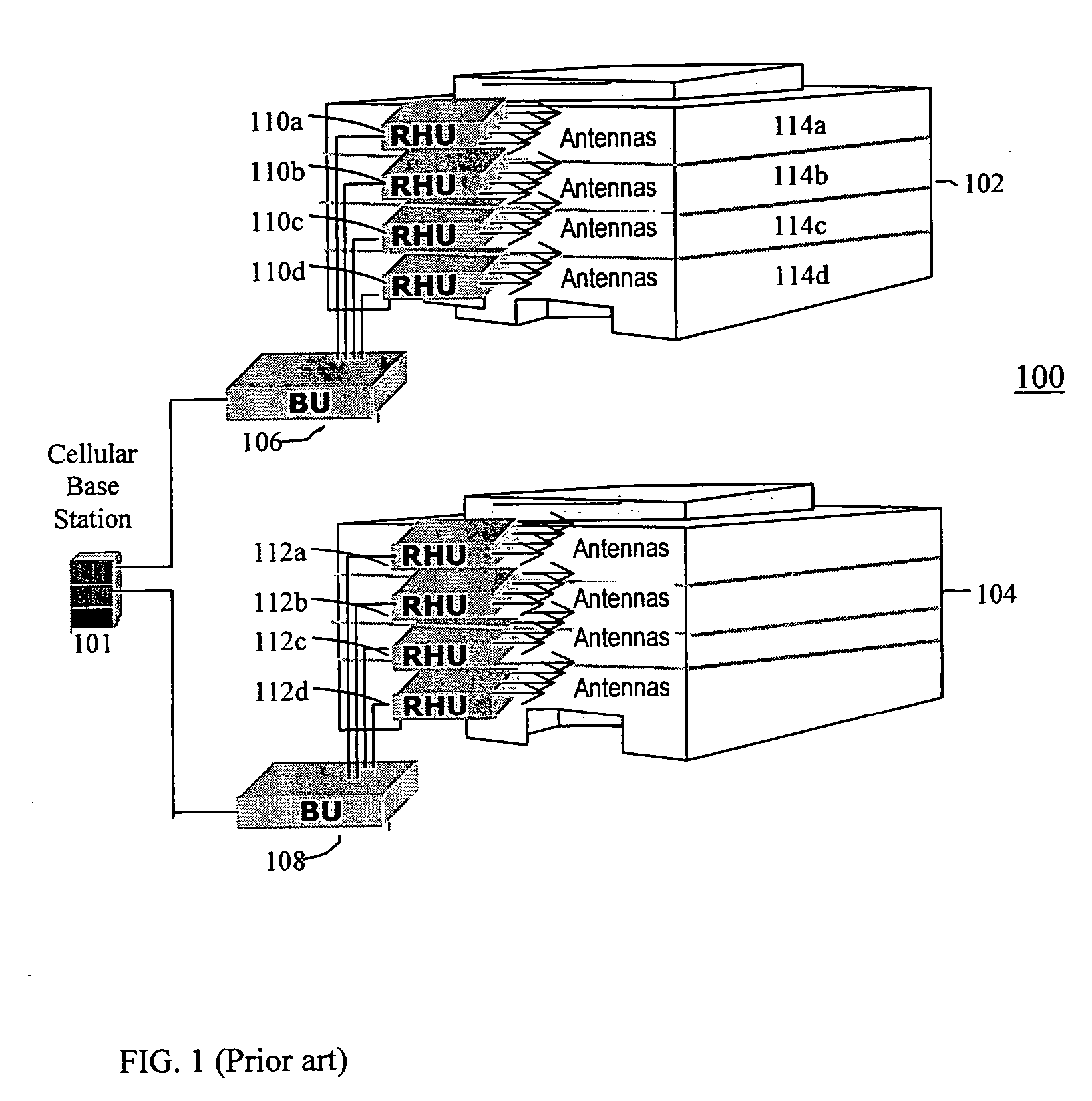Indoor location identification system
- Summary
- Abstract
- Description
- Claims
- Application Information
AI Technical Summary
Benefits of technology
Problems solved by technology
Method used
Image
Examples
Embodiment Construction
[0021] The present invention is of a system and method for accurate location, in real time, of a mobile cellular telephone in an indoor environment during emergencies (e.g. upon a “911” emergency call). The invention is based advantageously on the fact that a distributed antenna system can be used to monitor the RF signals received in each floor or area of each building covered by the DAS, specifically by the RHU covering that floor or area. The RHU identified with a particular emergency call indicates the location from which the call is made. Such a use of a DAS or DAS-like infrastructure is unknown in prior art, as well as unexpected. The indoor location identification system of the present invention can interface with existing distributed antenna systems, and can, upon request, provide information on the location of an indoor subscriber.
[0022]FIG. 2 shows a preferred embodiment of an indoor location identification system 200 of the present invention. System 200 is shown exemplar...
PUM
 Login to View More
Login to View More Abstract
Description
Claims
Application Information
 Login to View More
Login to View More - R&D
- Intellectual Property
- Life Sciences
- Materials
- Tech Scout
- Unparalleled Data Quality
- Higher Quality Content
- 60% Fewer Hallucinations
Browse by: Latest US Patents, China's latest patents, Technical Efficacy Thesaurus, Application Domain, Technology Topic, Popular Technical Reports.
© 2025 PatSnap. All rights reserved.Legal|Privacy policy|Modern Slavery Act Transparency Statement|Sitemap|About US| Contact US: help@patsnap.com



